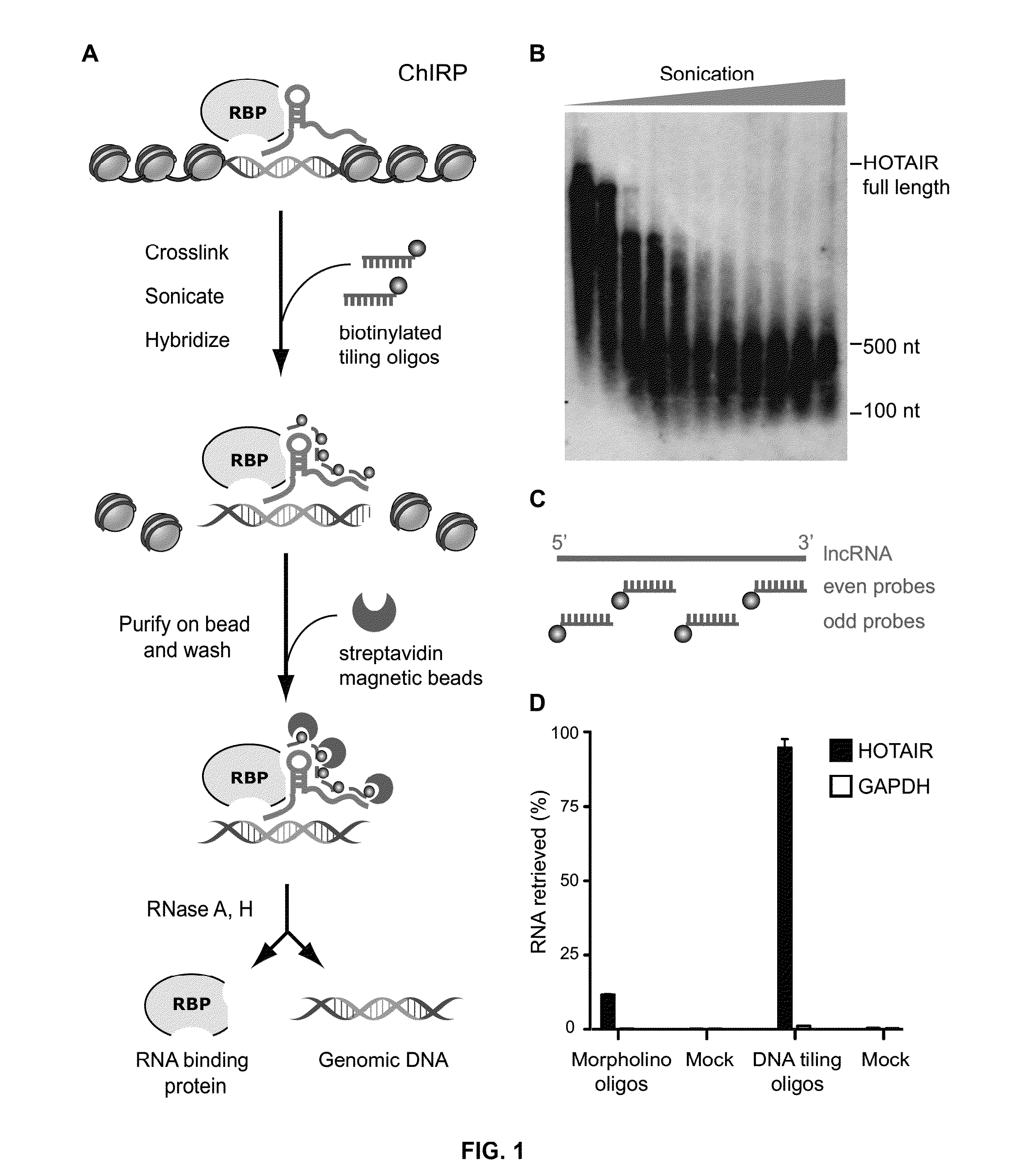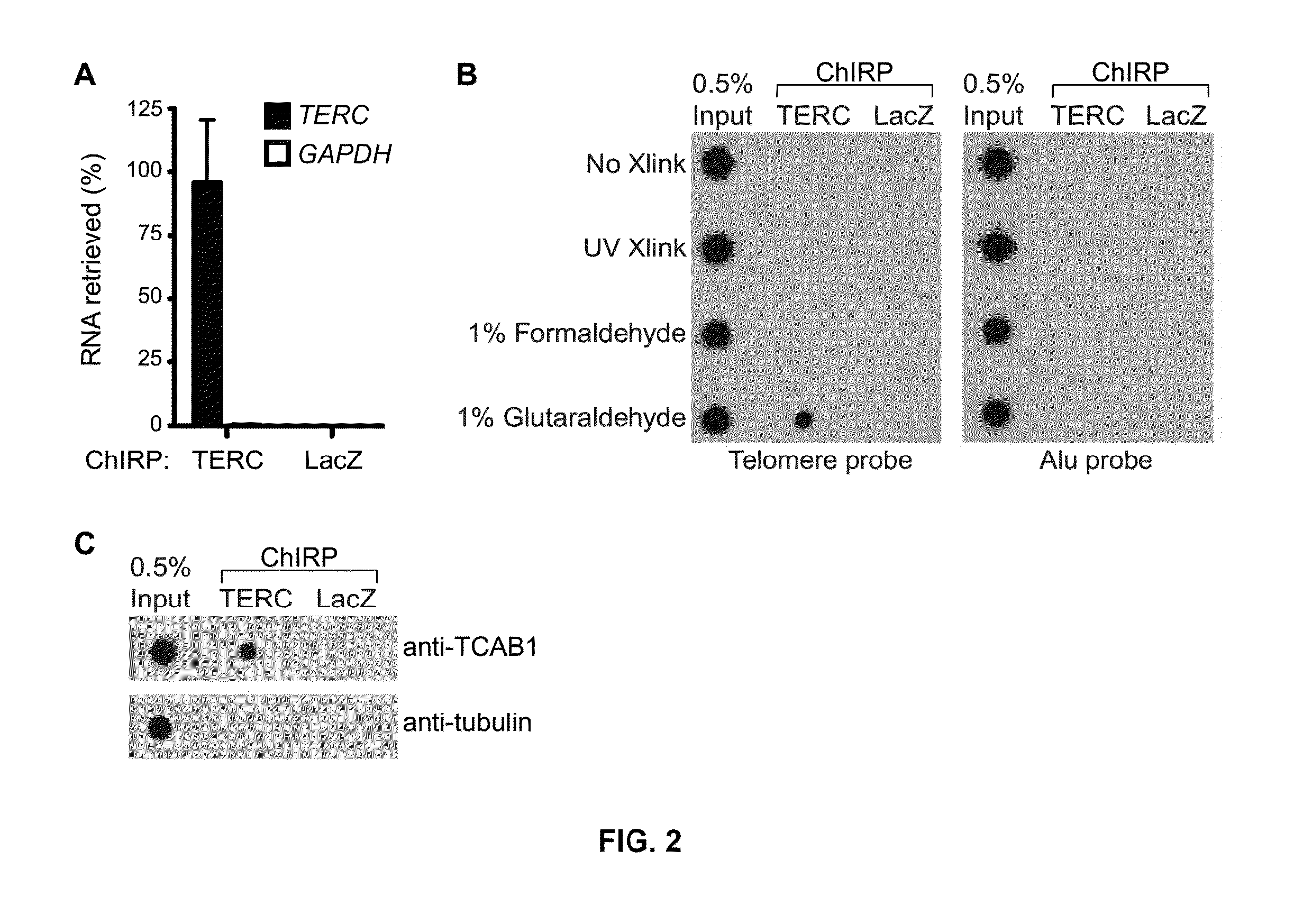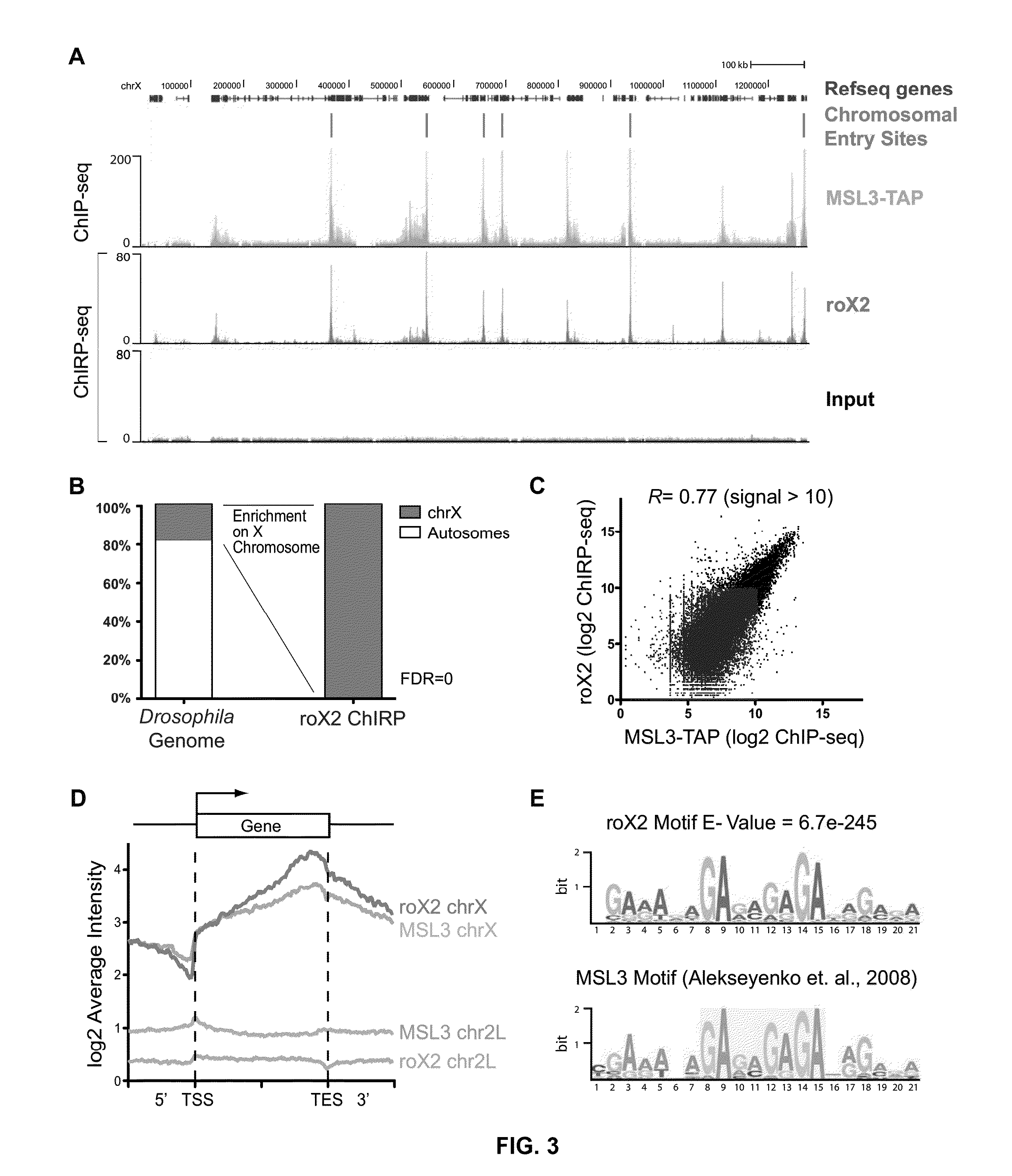RNA Interactome Analysis
- Summary
- Abstract
- Description
- Claims
- Application Information
AI Technical Summary
Benefits of technology
Problems solved by technology
Method used
Image
Examples
example 1
Development and Optimization of ChIRP
[0077]A new method, referred to herein as “ChIRP” that allows unbiased high-throughput discovery of RNA-bound DNA, RNA and proteins is provided (FIG. 1A). In this example, cultured cells are crosslinked in vivo, and their chromatin extracted and homogenized. Biotinylated complementary oligonucleotides that tile the RNA of interest were hybridized to target RNAs, and isolated using magnetic streptavidin beads. Co-purified chromatin was eluted for protein, RNA, or DNA, which was then subject to downstream assays for identification and quantitation.
[0078]This example uses multiple non-overlapping oligonucleotides per target sequence. Initial attempts to capture a lncRNA with morpholino probes, which are high-affinity ribonucleotide analogues resistant to nuclease digestion. As lncRNAs are known to be highly structured, three morpholino probes were designed against single-stranded portions of HOTAIR, as determined by prior high-throughput RNA seconda...
example 2
ChIRP-seq Elucidates roX2 Binding Sites on X Chromosome
[0082]To assess the sensitivity and specificity of ChIRP when applied genome-wide, a biological system was used in which the binding sites of a lincRNA are already known genome-wide, and in which ChIRP-seq selectively retrieves most of these sites. The Drosophila dosage compensation system is ideal for this purpose. In Drosophila, male cells up-regulate the expression of genes on their single X chromosome by two-fold; this dosage compensation requires a ribonucleoprotein complex containing the Male-Specific Lethal (MSL) proteins and two lncRNAs, roX1 and roX2. Staining of polytene chromosomes showed that roX and MSL co-localize exclusively on the male X chromosome but not on autosomes, and pioneering work by Kuroda and colleagues have defined the occupancy landscape of MSL proteins at high resolution.
[0083]ChIRP-seq was performed on endogenous roX2 in male S2 cells. Using the software MACS, we identified 308 roX2 binding sites—a...
example 3
ChIRP-seq Reveals TERC Occupancy Sites Genome-Wide
[0085]ChIRP-seq of TERC in HeLa S3 cells transduced with TERT and TERC was performed. TERC ChIRP-seq showed significant enrichment of telomeric DNA sequences (˜9 fold) relative to input reads, whereas Alu repeats were not (FIG. 4A). In addition, numerous specific TERC binding were observed events throughout the genome with signal intensities comparable to conventional ChIP-seq. TERC binding sites were focal; most binding sites are “peaks” of <600 by that do not spread beyond 1 kb (FIG. 4B), which is a pattern reminiscent of ChIP-seq peaks of transcription factors.
[0086]Using the same analysis pipeline employed in roX2 analysis, over 2198 TERC binding sites in the genome were identified, which represents a large resource to study potential non-canonical functions of TERC RNA and telomerase. It is known that TERT can bind to and co-activate Wnt target genes at chromatin, and it was hypothesized that TERC, as a component of the TERT com...
PUM
| Property | Measurement | Unit |
|---|---|---|
| Temperature | aaaaa | aaaaa |
| Time | aaaaa | aaaaa |
| Temperature | aaaaa | aaaaa |
Abstract
Description
Claims
Application Information
 Login to View More
Login to View More - R&D
- Intellectual Property
- Life Sciences
- Materials
- Tech Scout
- Unparalleled Data Quality
- Higher Quality Content
- 60% Fewer Hallucinations
Browse by: Latest US Patents, China's latest patents, Technical Efficacy Thesaurus, Application Domain, Technology Topic, Popular Technical Reports.
© 2025 PatSnap. All rights reserved.Legal|Privacy policy|Modern Slavery Act Transparency Statement|Sitemap|About US| Contact US: help@patsnap.com



